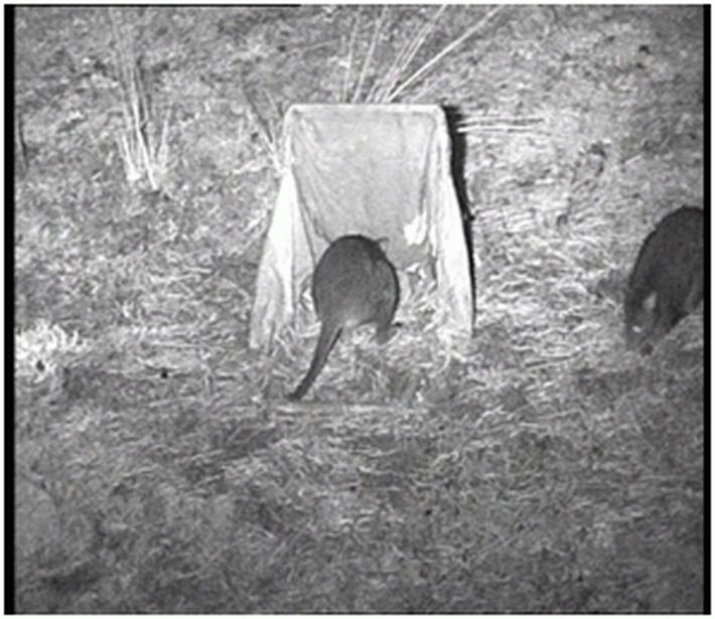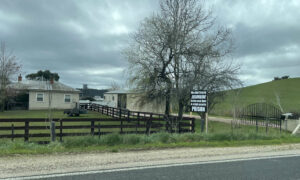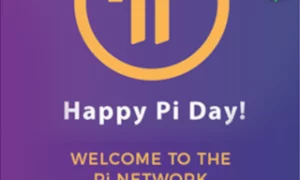**Pic: Rufous Wallaby before and after capture …
Introduction:
The announcement on 10th May by minister Mr Jeremy Rockliff that 1080 poison use in Tasmania will not be banned, as had been planned for 2015 by the previous Tasmanian Labor government, has alarming implications.
Permission to poison had become increasingly more difficult in recent years compared with the late 1900’s when it was used universally by farmers and foresters for pest browser control.
Some farmers indifferent to animal suffering, poison collateral damage and innovative 1080 alternatives if they happen to be marginally more expensive control measures than poison are calling for a return to the good old days when 1080 was easily obtained.
Environmentalists, caring farmers, and people from all walks of life with an ounce of concern for animal welfare are calling for a total ban on 1080, as are more pragmatic people concerned primarily about the image Tasmania is presenting.
It is unclear if the new Tasmanian government will retain or ease restrictions on 1080 use from the present restricted status (apart from not banning it). The minister’s words were that it will stay “essentially … the same as it is now” ( http://www.theguardian.com/world/2014/may/09/farm-poison-ban-reversed-by-new-tasmanian-liberal-government ).
Any new rules on use will probably depend on the effectiveness of lobbying by the various vested interests.
The Wildlife Management Branch of DPIPWE has kindly provided up to date 1080 use statistics for Tasmania:
Table 6: 1080 use in Tasmania, 1998-2014 – number of permits issued and the amount used.
* Preliminary results only (to end May 2013/14)
They have explained that no further direction on 1080 policy has been advised by the new Liberal government and that policy existing under the previous Labor government still applies. This requires shooting (where feasible) prior to use of 1080 and limits use of 1080 on the same site to no more than once every 3 years.
DPIPWE also explained that since 2010-11 all 1080 poison use has been for farms (as distinct from forestry use), that a breakdown of 1080 use by property size is not available, and that 1080 use is predominantly in the north-east and north-west of the state.
Jan Davis, as spokeswoman for the TFGA, has already presented the case for farmers, which is that fencing and shooting don’t provide adequate control of wallabies and possums. She said that the 1080 Alternatives Program (2005 – 2008) didn’t come up with any radically improved control techniques but did document enormous pasture and crop losses right throughout the State.
I was one of the grant recipients from the 1080 Alternatives Program, for research into trapping and night time filming of animals, so am well acquainted with aspects of 1080 use and the alternatives, as well as good and bad components of the $4 million program. (See http://dpipwe.tas.gov.au/wildlife-management/management-of-wildlife/the-alternatives-to-1080-program/grant-program-and-technical-reports/externally-funded-projects ). Since 2008 we have continued improvements in trapping techniques and trap designs from the points of view of economic effectiveness and humaneness. Our http://www.fabricanimaltraps.com/ website is the culmination of all this 10 years of research and has recently been posted online. This website is promotional for our traps. This article is to explain as objectively as possible why easing restrictions on 1080 is not a good idea, and how trapping has improved in leaps and bounds since 2008, to now be an economical technique for long term containment of pest browsing animals in Tasmania.
What’s wrong with 1080?
The cruelty of 1080 in the form of often agonising and painful death, with convulsions lasting hours, is well known, so I will not dwell on it here. (See e.g. http://www.ingentaconnect.com/content/ufaw/aw/2007/00000016/00000004/art00004.) Painkillers added to 1080 poison have demonstrated humaneness benefits (http://www.publish.csiro.au/paper/WR05018.htm), yet are never used commercially.
It is blatantly hypocritical for Australia to complain that some countries purchasing live domestic livestock from Australia have questionable humane abattoir slaughter practices when we are orders of magnitude more cruel in treatment of our nuisance animals!
At least mainland Australia confines 1080 use to exotic pest animals like foxes, rabbits and wild dogs. It is arguably more repugnant and reputation damaging to use it for iconic native wildlife, as in Tasmania! The collateral damage in the form of death from 1080 to innocent, supposedly protected, browsers such as wombats, bettongs, potoroos, bandicoots, antichinus species and other small marsupials is also well known. The failure to at least mandate analgesic use with 1080 seems inexcusable?
The secondary poisoning caused by carnivores eating poisoned carcasses in less well studied but is an acknowledged threat to domestic dogs and cats. The threat to quolls, Tas. devils and some local opportunistic meat eaters was of little concern late last century, but is more worrying lately with serious population declines in these species. We have traditionally been assured that such animals are not at risk because average adults need to consume large quantities of poisoned carcasses to die. The public is now more aware though that all animals are not adult, of average weight, nor of average susceptibility to 1080 (from fox baiting or secondary poisoning.)
There is a clear real threat to female and juvenile devils and quolls from 1080 ingestion from poisoned carcasses ( http://www.southwestnrm.org.au/sites/default/files/uploads/ihub/mcilroy-jc-gifford-ej-1992-secondary-poisoning-hazards-associated.pdf ). Overall, continued 1080 use presents Tasmania as indifferent to animal suffering, uncaring about collateral primary poisoning (wombats, bettongs, potoroos, bandicoots, antechinus, some birds and reptiles) and collateral secondary poisoning (quolls, Tas devils, domestic dogs and cats). It presents a need to continue use of a horrible indiscriminate poison purely on marginal economic grounds. It puts us at odds with most of the world is still permitting 1080 use.
For fox poisoning, 1080 Foxoff baits contain 3 mg poison. For browser control the rate in Tasmania is 0.014% = 3 mg per 21 grams carrot bait. DPIPWE provide data to show effect of secondary poisoning on various animals assuming a pademelon consumes 60 g poisoned carrots http://dpipwe.tas.gov.au/agriculture/agvet-chemicals/1080-poison. This indicates that an average female eastern quoll weighing 0.8 kg would need to eat 2kg of a poisoned carcass to be killed; a small 2kg Tas. devil would require a whole 6 kg pademelon to be killed, and a small eagle about the same.
Wallabies and possums though, can readily consume up to several hundred grams of poisoned carrots each, (this can be readily visualised as 2 – 3 standard cups full of chopped carrots x 100 grams each). Real life secondary poisoning can therefore occur for eastern quolls eating 200 – 300 grams poisoned carcass and for Tas. devils and eagles eating less than a kilogram, well within their capabilities.
Current 1080 use in Tasmania for browser pest control averages a bit over 1 kg per year for 15 – 30 permits issued per year. This equates to a figure in the order of 7 tonnes of poisoned carrots equivalent laid at approximately 5 kg per km ( http://www.feral.org.au/wp-content/uploads/2010/07/RAB002_1080.pdf) x 100 – 300 metres width. Normally a semi-continuous 1080 laced carrot trail is laid near bush and property perimeters, so use per hectare is not simple to calculate since it depends on the distance animals travel to find it. This relates though, to up to approximately 1400 km of poison line laid annually x access by animals for a distance of about 250 metres (mainly from the bush side of the poison line) = 35,000 ha area annually poisoned divided by 15 – 30 properties = 1000 – 2000 ha typical property size using 1080.
That is to say, 1080 is currently only used significantly on large property holdings, not small – medium sized 50 – 200 ha properties. Recent use of a little over 1 kg 1080 for browser control annually compares with just 40 grams per year at 3 mg per bait x 13,000 baits over 220,000 hectares average annual use by the fox eradication program. Statistics for 2000 (15 kg pure 1080) until 2007 (1.4 kg) 1080 poison use are published in http://soer.justice.tas.gov.au/2009/indicator/115/index.php . More recent data is provided in the above table in the introduction. Additional historical data can be viewed at http://www.theadvocate.com.au/story/1919949/baits-claim-lives-of-thousands-of-animals/
1080 Poisoning costs
We now know, thanks at least partially to the 1080 Alternatives Programme, that 1080 poisoning is not even economically competitive (let alone socially acceptable) on sites of less than at least 50 ha because it costs in the order of $10 – 35 per browser killed, because it can normally only be used on one site every 3 years, and because new immigrants quickly replace many of the killed animals.
Financial Analysis provided by the 1080 Alternatives Final report http://dpipwe.tas.gov.au/Documents/1080ReportFINAL.pdf indicates 1080 poisoning costs. The data relates to a cost of $194 per ha for a 1 km poison line x100 metres wide, $85 for a 4 km line or $54 for a 10 km line i.e. for a moderately serious browser presence, such that 25% of pasture was being consumed , on a typical 6 dry sheep equivalents (DSE) per ha Tasmanian farm, equating to a rufous wallaby equivalent population of about 7 wallabies per ha, then the costs per browser killed via 1080 poisoning are $10 – $35 (1km line = $35, 10 km line = $10)
1080 poisoning clearly has a few practical and economic problems, quite apart from humane and social responsibility issues. The most important of these is that kill percentage is frequently quite low because of the brief 1 – 3 day poisoning period, whereby many animals often do not appear on stormy nights or nights with Tasmanian devil local presence. Rainfall can also leach poison from carrots. It is also known that in addition to all local browsers not emerging on all nights, there is a slow but general movement of browsers both into and out of specific localities over a time period of as little as a few weeks, and that there is a general vacuum effect whereby new immigrants emerge to varying degrees to replace killed animals. This commonly averages approximately 30 – 50 % of original animals replaced within 2 months in a small 50 -100 ha site with bush surrounds.
Even the survey by Carla Mooney from the 1080 Alternatives Program http://dpipwe.tas.gov.au/Documents/Understanding-landholder-decision-processesReport_June_FINAL_080626.pdf#search=carla%20mooney (page 59) showed that nearly 50% of farmers with 1080 poisoning experience considered 1080 effective for only a single season
What is so good about trapping?
With trapping there are a lot of convenience advantages. No bureaucratic restrictions (just an easily obtained over the phone 12 month crop protection permit needed), no visits by suspicious officious government officers cross examining about alternative control methods you pretend you have seriously tried before applying for a poisoning permit, no need to advise neighbours that you are about to poison their iconic native wildlife, no need to go out at night after an exhausting day and drive around for hours to shoot a few wallabies, no need to purchase expensive meat for dogs and family (just trap a wallaby any time!), no control measure restriction of 200 metres from a residence (as with shooting and poisoning), no need for a firearms licence, no need to go to town each month to purchase expensive grain or hay for livestock because wallabies have eaten most of your grass!
At the completion of the 1080 Alternatives program we had achieved moderate success at trapping rufous wallabies (pademelons) but had hardly any success with Bennett’s wallabies. Since then we have dramatically increased success with rufous wallabies to the stage where they are easy to trap, and have changed techniques to easily trap Bennett’s wallabies also. The key to both technical and economic wallaby trapping success (possums are easy to catch in just about any trap design) is to first attract the animals via food provision for several days (up to 10 days) to have them eat from locked open traps, or pretend traps (feeders resembling a trap shape) and then achieve in the order of 50% trap success for just a few nights. Traps can then be moved to another site, or left locked open for a couple of months until new arrivals come from generous friendly neighbours (often crown land or national park) and the process repeated.
For a farmer it makes sense to get pest browser numbers down to a low tolerable level, and keep them low by regular repeat trapping (or alternative control measures). It is not a good idea to let numbers increase to plague proportions and then have a serious control and pasture /profit loss situation. A desperation move to apply for a poisoning permit indicates poor management in maintaining control of wallabies and possums over many months! It is not sensible to allow more than approximately 2 months before repeat control measures, because new arrivals from uncontrolled neighbouring sites are certain. It is not sensible to rely on just a handful of traps for control because unit trap cost of time in tending low traps numbers is high, especially if travel time to access the site is more than a few minutes. It is ridiculous to even contemplate poisoning as a routine 3 year measure because is simply cannot maintain low pest browser numbers.
Trapping costs:
Setting traps takes just a few seconds. Food in the form of rolled barley or other grain is our preferred food. It costs in the order of $2 per trapped animal. We argue that a farmer might just as well provide grain to wallabies to assist their capture, as have them eat the grass so that grain or hay has to be fed to the livestock! Overall cost per animal removed should be expected to be in the order of $6 per animal (range $5 – $15) for all costs, including $1 per animal for the trap capital cost or rent component. Where travel time from base to trap location exceeds about half an hour the travel cost becomes significant. It is important to use local staff as far as possible to tend traps and to use as many traps as possible to contain the travel cost component. We recommend at least 30 traps be deployed at any time for all but small holdings of a few hectares. Where travel time is significant 50 – 100 traps can be a more economic option.
While these are the cold hard economic facts of pest browser control via trapping, the issue is additionally one of a fair go for animals. No matter how humane the trap design, it is not a good outcome to have to euthanise the animals because the pasture is needed for domestic livestock. Hopefully we can, in future years, utilise the catch efficiency and humaneness aspects of the traps to advance animal welfare concerns by trapping animals to administer medicines, birth control agents, and sterilisation procedures.
What about shooting?
Shooting can be a humane and effective pest browser control option. Many professional shooters earn a living from browser control and will be adversely affected if 1080 poison is freely available. The financial analysis paper in the 2011 1080 Alternatives Final report http://dpipwe.tas.gov.au/Documents/1080ReportFINAL.pdf provides a useful shooting record for number of browsers shot per hour. This is an average of about 4.0 wallabies per hour (44%< 2 per hr - assume 1 average; 45% 3 - 6/ hr - assume 4.5 average; 3% 7 - 12/ hr and about 8% > 12 / hr = 3.96 per overall average. For all animals shot, including possums, the figure is 6.0 per hour.
A significant disadvantage of shooting is in the fact that wallabies quickly become gun shy, so that it is difficult to get animal numbers really low, in contrast to trapping. Pademelons are especially adept at scurrying into the cover of bushes at the slightest sound. Bennett’s wallabies can often be more economically controlled by shooting than pademelons because they habitually venture further from the bush edge into pasture.
What about fencing?
Fencing is economic and effective in many situations. e.g. see http://www.tia.tas.edu.au/__data/assets/pdf_file/0019/373501/Wallaby-proof-fencing-Tasmania-2013_web.pdf It costs in the order of $10,000 per kilometre which relates to $400 per hectare for a square 100 ha property or more like $1000 per hectare for more common smaller and irregular shaped blocks. In many stony and irregular terrain sites with creeks, gullies, and roads, fencing is not practical and even in ideal situations requires constant monitoring to maintain wallaby proof integrity. Possums can consume large amounts of pasture, being especially fond of clover, and are able to easily pass through, under and over all standard wallaby fences.
Unless a pest browsing problem is particularly severe it is often arguably more convenient, economical and flexible to simply get the numbers to manageable level and then maintain low numbers by regular trapping, rather than tie up large amounts of money in expensive fences requiring constant repair and maintenance. Fenced sites including bush cover can also have problems with animals trapped inside.
Conclusions:
Sustaining low pest browser numbers is arguably the most important and hitherto neglected aspect of Tasmanian browser control. The same message was emphasised repeatedly at the recent 16th Vertebrate Pest management Conference in Brisbane for many pest animal species ranging from camels to foxes, rabbits, wild dogs and wild horses. (e.g. the recent shooting of 200,000 camels in Central Australia is a classic example of what can happen when control gets out of hand). In Tasmania the issue has not been previously seriously addressed because browser control has traditionally relied on periodic (1 – 3 year interval) poisoning in a boom or bust like scenario i.e. poisoning has removed the bulk of the browsers and local numbers have then been allowed to increase by about 40% per year by breeding plus immigrants arriving from nearby. Traditional browser control methods shooting and poisoning are not amenable to economically maintaining low animal numbers because the unit animal control cost is very high when animals are infrequent.
If the Liberal government eases restrictions on 1080 poisoning to the extent that landowners and foresters can use it freely then it will obviously unfairly impact adversely on the livelihood of shooters and trappers. If the status quo is maintained whereby it is possible to obtain poisoning permits when all else fails, then hopefully we poison haters will gradually prevail and prove that a viable alternative to poisoning exists, so that further permits are unnecessary. If 1080 permits are extended to facilitate use it will definitely impact adversely on many endangered native wildlife species, including endangered quolls and Tas. devils. Unfortunately feral cats, the one species abundant yet unwanted in Tasmania, are not normally carrion eaters so will be unlikely to be killed by secondary poisoning in significant numbers.
Hello Jan Davis – do you a deal? – you organise a small property with a serious rufous &/or Bennett’s wallaby/possum problem and I will conduct a free demonstration trapping control trial (Conditions apply).
Just post in a comment to this article if you are interested? We would need to first carefully establish the extent of the problem. Possibly then try shooting or poisoning to demonstrate the limited control achieved and then set up a number of traps for long term 2 – 3 month control of wallaby and possum immigrants to maintain a manageable low density population with pasture loss less than 3 – 5 %.
Watch on YouTube here:
https://www.youtube.com/watch?v=F06i2abCyVQ&feature=youtu.be





























Perpexed
July 6, 2014 at 16:42
Houston, we seem to have a problem? Here in Tasmania are officially endangered species including the eastern barred bandicoot, Tasmanian devil, wedge tailed eagle, spotted tail quoll, eastern barred bandicoot, New Holland mouse, common wombat, and quite a few other birds. The eastern quoll is equally threatened, but not yet on the official endangered species list.
All these species are further endangered by using 1080 poison, as explained by Mr Edwards. How can our government reconcile their endangered status and need for protection with its policy of permitting their destruction with 1080 poison. Surely their must be a law against that?
john hayward
July 6, 2014 at 22:38
One reason why 1080 use has dropped is the decline of LibLab mate forestry which used about 90% of the stuff at heavily subsidised rates until it collapsed. Because plantations were levied the same rates as unimproved land. fencing made no sense to them.
It should also be noted that 1080 was also found to cause residual organ damage at sub-lethal dosages, as well as killing an unstudied number of birds as well as potoroos and bettongs, which will soon be joining the endangered lists.
As a pernicious pest species, few can match the Tasmanian pollies.
John Hayward
Eagle eye
July 6, 2014 at 23:31
its a hell of an ad, but when 2 men can shoot 480 wallabies off a ute in less than 6 hours on 200 acres of pasture the cost of replicating the result with labour intensive traps that can only catch a single wallaby between emptying, after several days of training with grain, does not seem to stack up.
I can see its merit on enclosed blocks, dealing with the pademelon remnants, perhaps, but otherwise fencing, shooting and one way gates into large, secure pens for shooting when daylight comes are far more cost effective. As it happens we just completed the prototype one way gates last night. We will see how they work as soon as we build the pen. If it does we will have no shortage of wallaby meat for sale, in controlled circumstances.
I hate 1080, but I can understand its attraction for those farmers with long bush boundaries trying to survive the plague long enough to redo the fencing that used to work and now does not. Its replacement will exclude everything except small snakes on my property. Tough for the other wildlfie, unfortunately.
Ian Rist
July 7, 2014 at 14:56
At the risk of repeating myself I say again the laying of 350,000 plus meat based 1080 fox baits across Tasmania will go down in our sad History as possibly the biggest Government backed stupidity since the Government of the day placed a bounty on the Thylacine.
We will never know the extent of the damage this badly thought out baiting stupidity would have caused but my guess is we will all be asking soon what has happened to all the Devils, Quolls and other Tasmanian natives.
All based on a lie, to quote Pulitzer prize winner Neil Sheehan ” A bright shining lie.”
The people responsible for this fox fiasco will be and should be held accountable.
Ian Rist
John Maddock
July 8, 2014 at 22:24
Full marks to Ivo for his trap. I’m very impressed with the quality of thought put into it, and the resultant design.
Full marks also to Eagle eye for his plan for one way gates on a trap. I’ve been thinking of the same for some time but haven’t done more than buy the fence wire. I’m keen to read a followup report on his success.
JV
William Boeder
July 9, 2014 at 03:59
I could recommend a person for those above to consult on all of Tasmania’s last 10 or so years of intensive poisoning and toxic chemicals usage, my mind dwells upon a person that I recall was a person tagged as our very own ‘Chemical Ali.’
Yep, a God-fearing Christian person who served during the above time as a member of this State’s former Labor government as a cabinet minister.
A boiled egg for those who know to whom I refer to in this ugly instance.
Henry Haszler
February 28, 2015 at 15:24
I coordinate a Pindone based laced carrots rabbit baiting program on a bunch of near contiguous half to one and more acres properties on the outskirts of Eltham, itself on the outskirts of Melbourne.
We have a registered contractor do the job every 2 or 3 years, ie whenever I decide the rabbits have been having too much sex. . He gives 2 – 3 free feeds and then about 2-3 Pindone feeds. It works very well.
Point of this post is that we use Pindone because 1080 is considered too dangerous for urban and near urban areas. That means Pindone must be less toxic than 1080. SO, any chance that Pindone could be used by commercial farmers with good effect but without quite the serious disadvantages of 1080?
Clive Stott
February 23, 2016 at 18:02
Good on you Ivo Edwards for the article.
I made one-way ‘gates’ in the back fence on my property to let the animals get back to the bush each morning. They loved them!
I was going to fit a cyclo counter but now it is fully fenced and not a problem.
Hello Jan Davis where are you?
Haven’t heard much from you after you tried to say that agricultural burns or fuel reduction burns don’t cause PM2.5.
That is what this smoke is, mostly PM2.5
http://cleanairtas.com/departments/tfga-jan-davis-media-release17.9.14.pdf
I hope Jan takes up your very sincere invitation Ivo.